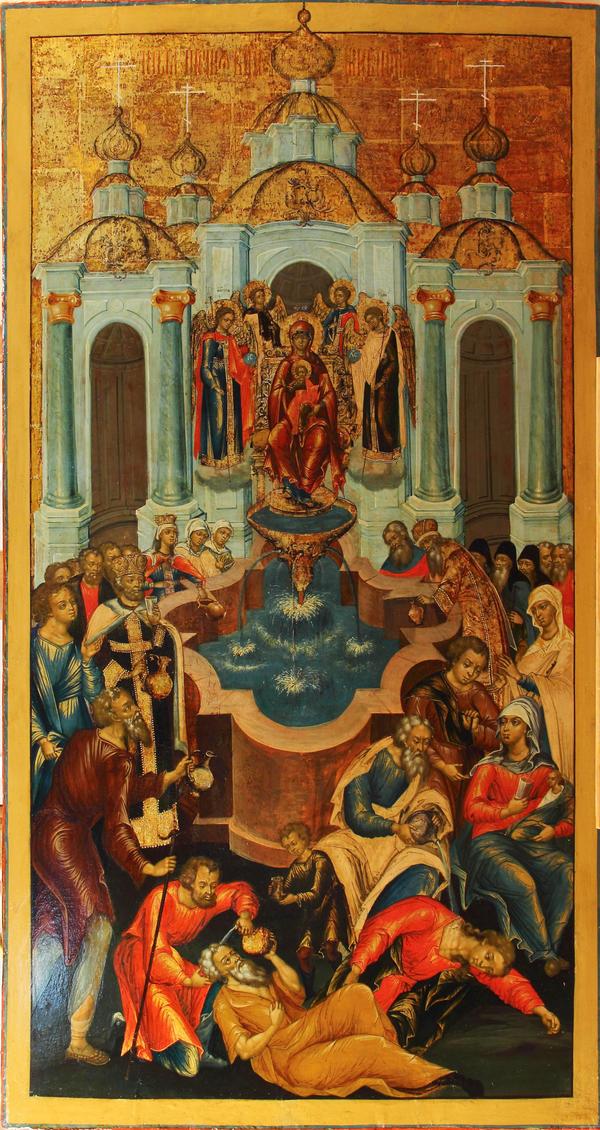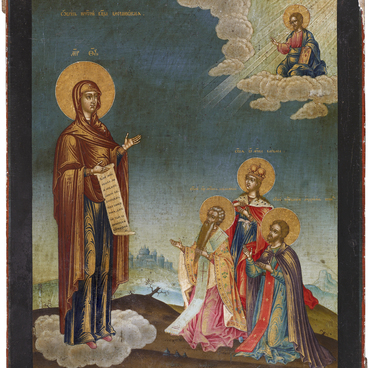The iconography of the Theotokos of the Life-Giving Spring belongs to the type Kyriotissa or Holy Mother. Such icons show the Theotokos holding the Child Jesus in front of her. This image is based on Orante, a more ancient icon painting type, but the arms of the Theotokos are not outstretched in the posture of prayer.
The first icon Life-Giving Spring was painted in the 5th century. According to the legend, Byzantine soldier named Leo Marcellus who later became Byzantine Emperor Leo I met an exhausted old man in a grove near Constantinople. Marcellus began to search for water to give the man and head the voice of the Theotokos who told him that he would become the emperor and showed him the way to the spring. When the prophecy came true, Leo I ordered to clean the spring, build a temple over it and paint an icon of the Theotokos.
Initially only the Virgin Mary and the Child Jesus were painted on the icon. From the 14th century they began to paint a bowl, a fountain or a font. In Russian art Life-Giving Spring icons of the Theotokos became widely used in the 17th century, especially in the art of the Armory masters. Their popularity was based on a heightened interest in ancient Byzantine sacred objects - first of all in wonderworking icons of the Theotokos.
The first icon Life-Giving Spring was painted in the 5th century. According to the legend, Byzantine soldier named Leo Marcellus who later became Byzantine Emperor Leo I met an exhausted old man in a grove near Constantinople. Marcellus began to search for water to give the man and head the voice of the Theotokos who told him that he would become the emperor and showed him the way to the spring. When the prophecy came true, Leo I ordered to clean the spring, build a temple over it and paint an icon of the Theotokos.
Initially only the Virgin Mary and the Child Jesus were painted on the icon. From the 14th century they began to paint a bowl, a fountain or a font. In Russian art Life-Giving Spring icons of the Theotokos became widely used in the 17th century, especially in the art of the Armory masters. Their popularity was based on a heightened interest in ancient Byzantine sacred objects - first of all in wonderworking icons of the Theotokos.
The image was complicated in the Russian icon painting tradition as the Theotokos was painted not only with a bowl and font but also with some saints, temples in the background and suffering sick persons in the foreground.




